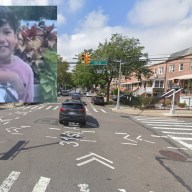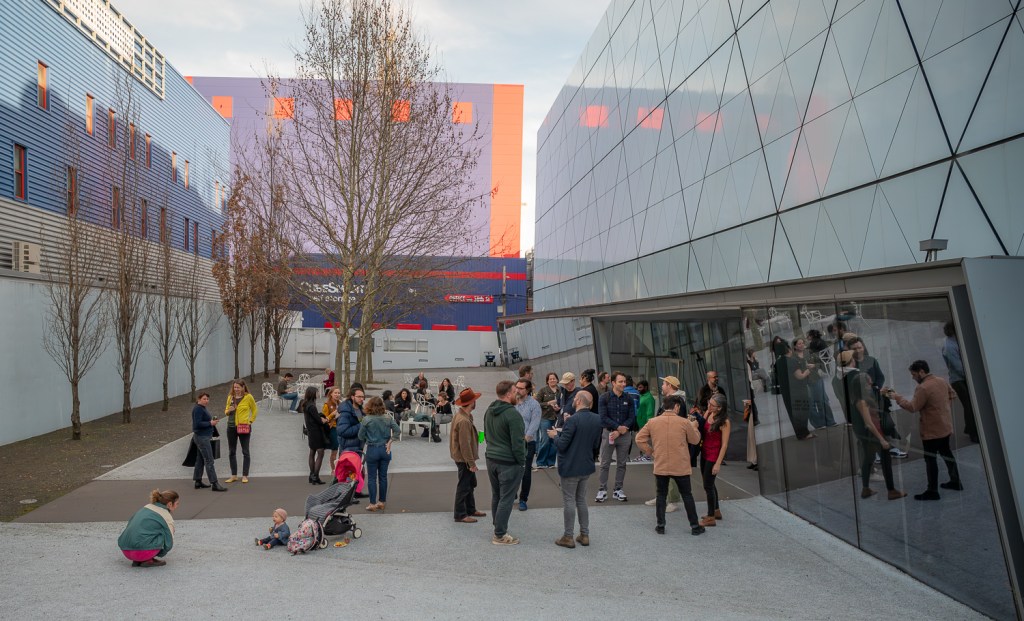On a recent Saturday, Michael Parrino drove from his home near Ditmars to the Grand Liquor store on the corner of 31st Street and 30th Avenue to buy some wine.
However, he could not park his car. As usual, black and grey Lincolns were parked back to back on both sides of the block.
The Lincolns, formally known as livery cars, also park at other busy intersections in Astoria: 31st Street and Broadway, 31st Street and 36th Avenue, and 31st Street and Ditmars Boulevard.
Astoria residents complain that the liveries deprive them of parking spots in their already-congested neighborhood, but livery drivers don’t consider their behavior disruptive. In fact, they say they are forced to park there.
“If I ask any one of them to move because he’s taking two spots, he doesn’t move. I know they’re trying to make a dollar, but they shouldn’t be inconsiderate,” Parrino said.
There are many stores on the blocks where the liveries park, but only two of these stores - the Trade Fair supermarket and Rite Aid - provide parking for customers. In addition, none of the restaurants on these blocks offer customer parking.
Parrino is not alone in his unhappiness regarding the liveries’ constant presence on 31st Street.
“Are you kidding me! I get a lot of complaints [about the liveries],” said George Delis, District Manager of Community Board 1.
However, livery drivers argue that they have their reasons for parking at the busy commercial intersections. These spots have a lot of pedestrian traffic, and the subway exits are located there, making it easy to find customers.
Potential customers know that these intersections are informal taxi stands, said Jarful Hossain, a livery driver who often parks on 31st Street. Customers rely on the liveries because yellow cabs are rare in the outer boroughs.
“We’re not bothering anybody, so why can’t we park here?” Hossain said.
Livery drivers, however, are not allowed to solicit customers on the street or answer hails. This is a rule of the Taxi and Limousine Commission (TLC), a city government agency regulating the liveries. Unlike yellow cab drivers, livery drivers are only supposed to be on call, picking up customers who have phoned the companies they work for to request a ride. Livery drivers pay a share of their earnings to those companies, called livery bases.
The drivers on 31st Street work for small companies usually based in Queens. These companies have been getting fewer phone calls nowadays, giving drivers less business.
Yet, drivers still have to pay monthly and annual fees to the TLC in order to stay licensed. They also have to maintain their insurance, which they say costs about $600 a month and daily expenses such as gas.
Drivers say their income can reach $100 on a good day; this, however, is gross income, so, at the end of the day, they are left with little money.
“We’re surviving,” Hossain said.
Meanwhile, the owners of the companies that drivers such as Hossain work for, say they are not always aware of their drivers’ parking and soliciting practices.
Deonarine Booddram, who owns Royal Taxi and Limo Services, said he was not aware that his drivers park on 31st Street.
“They have to stop parking on the public street and they have use the base parking lot,” he said.
Not only do livery drivers park on 31st Street, but sometimes they also do it illegally. Police officers from the local precinct and enforcement officers from the TLC regularly patrol the area, issuing tickets to drivers who double-park or don’t feed the meters. Officers also issue tickets to drivers who solicit customers.
During the past month, 24 tickets were issued to livery drivers on 31st Street for double-parking and 17 tickets have been issued for TLC violations on the same street, according to the local precinct.
Livery drivers on 31st Street admit they often receive tickets, but it doesn’t prevent them from returning.
This cycle will not be broken until the public stops hailing the liveries, said a TLC official who refused to give his name.
“As long as there is - unfortunately - a demand for this [the liveries], the drivers will continue to see enforcement as the cost of doing business,” the official said.
Meanwhile, Delis believes the long-term solution is up to the TLC and the police. “They need proper penalties. At what point do you confiscate the vehicles?”


































